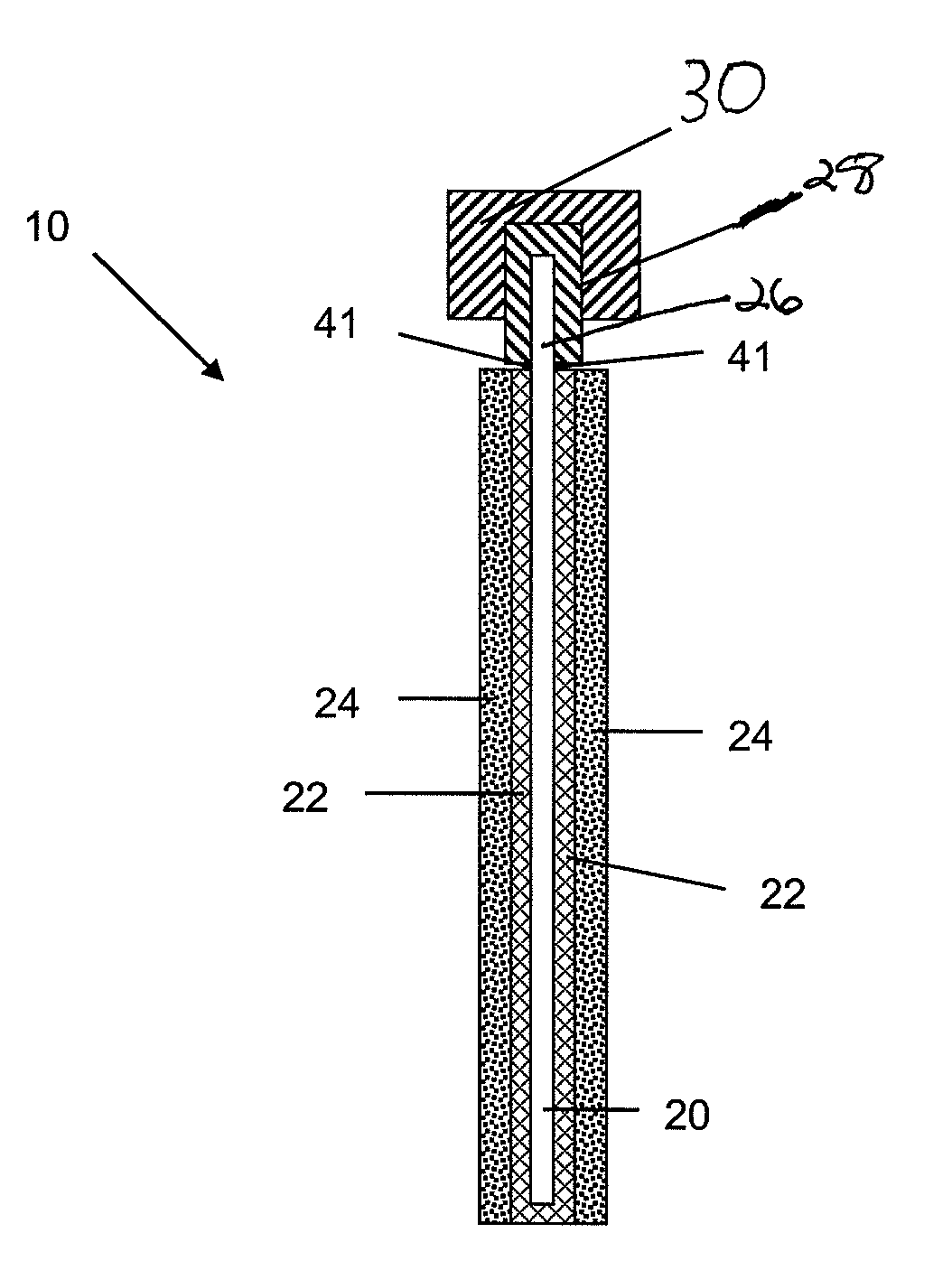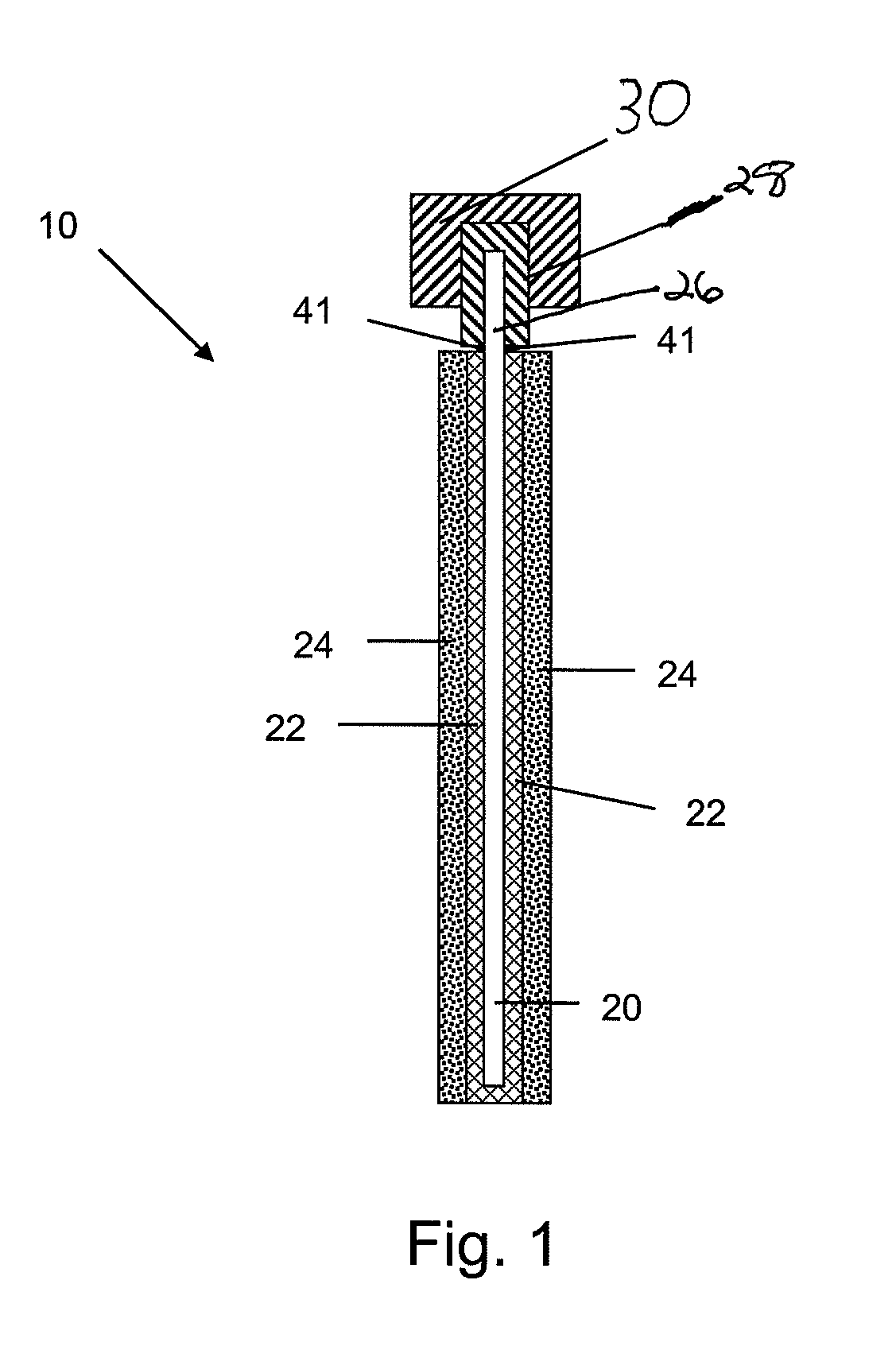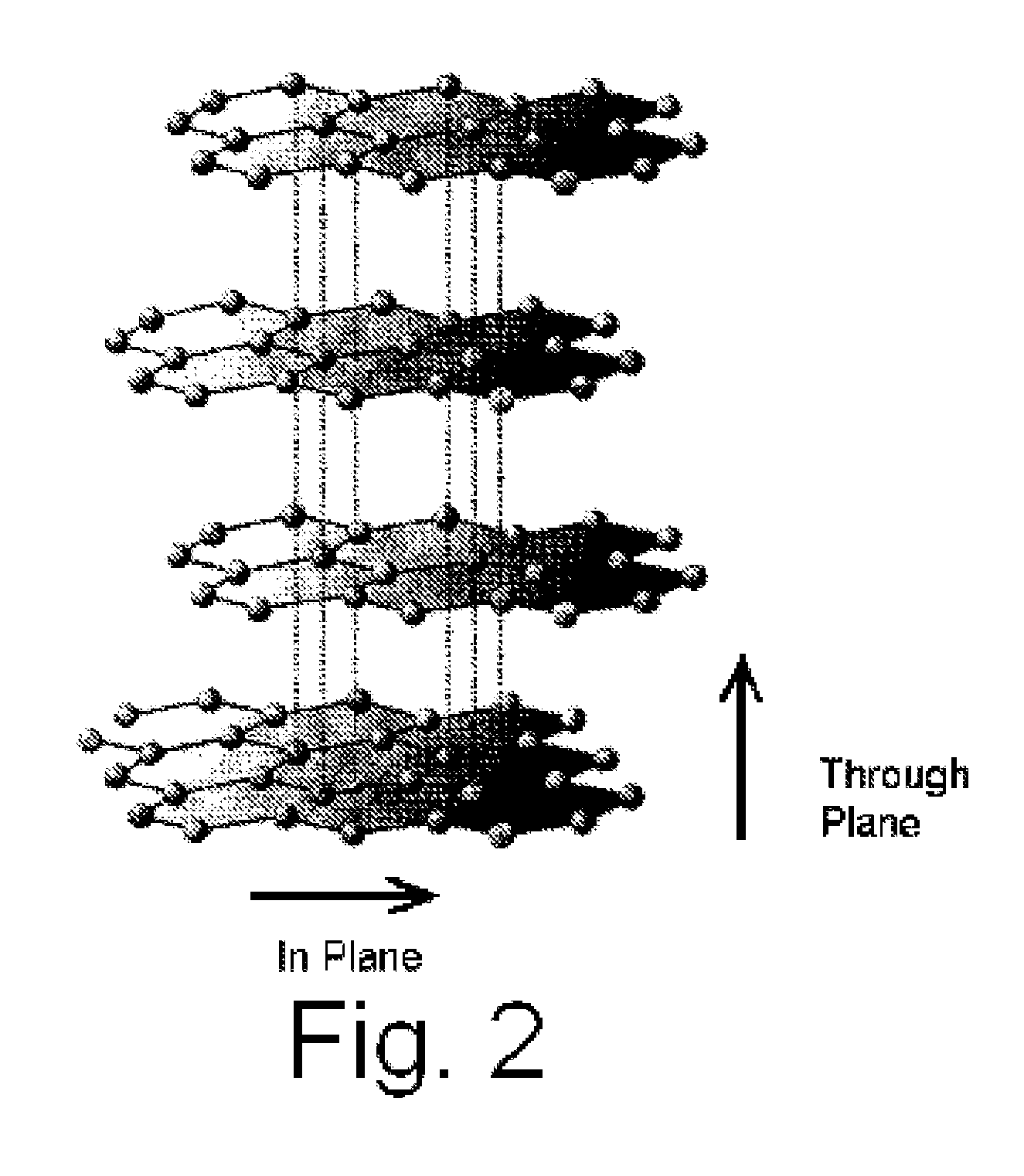Negative Electrode for Hybrid Energy Storage Device
a technology of energy storage device and negative electrode, which is applied in the direction of electrolytic capacitor, cell component details, cell components, etc., can solve the problems that the equipment commonly used in the manufacture of conventional lead-acid batteries, motive power, stationary, etc., cannot be employed in the production of hybrid energy storage devices, and achieves good contact resistance properties and eliminates the need for high stack pressure
- Summary
- Abstract
- Description
- Claims
- Application Information
AI Technical Summary
Benefits of technology
Problems solved by technology
Method used
Image
Examples
example 1
Impregnated Graphite Corrosion-Resistant Coating
[0044]Nine negative electrodes were made without an active material, but with 3 different types of graphite foil (grafoil). Indicating paper was cut to fit (wrap around) on both sides of a copper current collector. Four electrodes were made using an automated glue machine and 5 electrodes were made with the same glue but applied by hand, so that if there are leaks from the glue it could be determined whether there is a faulty glue process or a failure of the glue.
[0045]All electrodes were saturated with sulfuric acid, squeezed tightly into a battery case, and then pressurized at 35 psi for 30 minutes. After depressurizing, the electrodes were carefully rinsed and the grafoil was peeled away from the copper current collector to look for signs of leaking.
[0046]The 3 electrodes made of grafoil with 100% paraffin wax impregnation always leaked in the center indicating failure of the grafoil not the glue, as shown in FIG. 3. The 3 electrode...
example 2
Lead Lug on Tab Portion
[0047]A lead-tin coating was used to protect a copper tab from corrosion, as illustrated in FIG. 7A. The lead-tin material corrodes and forms a corrosion resistance layer of lead sulfate. However, a cast on strapping process results in a significant depletion of the coating. During the COS operation, the tab is placed in contact with molten lead. The heated lead causes significant heating of the tab resulting in the melting of the protective lead-tin coating which is drawn into the lead strap, leaving the copper tab with a very thin protective coating. As a result, the copper tab corroded from a sulfuric acid electrolyte, as shown in FIG. 6.
[0048]A lead lug was molded onto a copper tab in place of a lead-tin coating, as illustrated in FIG. 7B. The lead lug did not melt during a COS operation and thus maintained a protective coating.
PUM
| Property | Measurement | Unit |
|---|---|---|
| conductivity | aaaaa | aaaaa |
| density | aaaaa | aaaaa |
| thickness | aaaaa | aaaaa |
Abstract
Description
Claims
Application Information
 Login to View More
Login to View More - R&D
- Intellectual Property
- Life Sciences
- Materials
- Tech Scout
- Unparalleled Data Quality
- Higher Quality Content
- 60% Fewer Hallucinations
Browse by: Latest US Patents, China's latest patents, Technical Efficacy Thesaurus, Application Domain, Technology Topic, Popular Technical Reports.
© 2025 PatSnap. All rights reserved.Legal|Privacy policy|Modern Slavery Act Transparency Statement|Sitemap|About US| Contact US: help@patsnap.com



